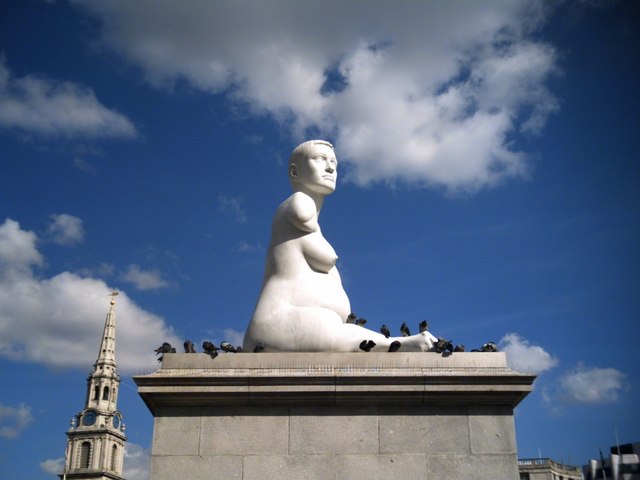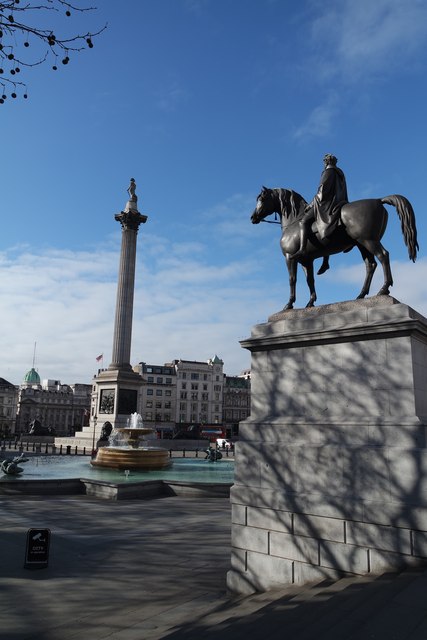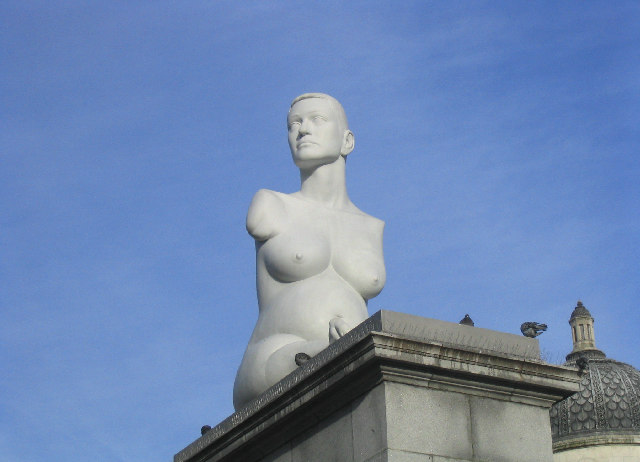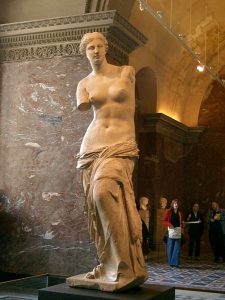In early 1820, farmer Yorgos Kentrotas was exploring the ancient ruins of Milos, Greece, and chanced upon a buried alcove covered in a heavy slab. To his surprise, the niche housed a fine marble statue. He had found one of the most revered works of ancient Greek sculpture, the Venus de Milo. Centuries later, much of the interest surrounding the Venus lies in the mystery of her discovery, and how she is differentiated from other classical sculptures by what she lacks.
Artist Marc Quinn’s interest in these ‘incomplete’ bodies inspired his collection of sculptures, The Complete Marbles. It was through a discussion of Hellenistic art, and the irrefutable beauty of sculptures that had lost features or limbs, that Quinn convinced fellow artist Alison Lapper to model for him.
Lapper was born with phocomelia, a congenital condition that has similar physical manifestations to those seen in ‘Thalidomide babies’. She was born with absent arms and shortened legs, and wasn’t expected to live long. When it became clear that she was going to survive, she was sent to a facility that could provide for her, but she, along with other children, was abused and dehumanised by her caregivers.
To Quinn, Lapper embodied a different kind of heroism to that traditionally reserved for marble sculptures. In Ancient Greece and Rome marble was reserved for the depiction of heroes and gods in public monuments. Quinn wanted to address the disparity within a society that automatically admires the Venus de Milo as beautiful because of what she lacks, whilst routinely neglecting to see beauty in disabled people: “Instead of someone who conquers the world at the head of armies, I wanted to show someone who conquers adverse situations in their daily life, who lives a full life and represents the future by being shown as she is creating a new life.”
How has the public responded to Quinn’s work? In 2005, Quinn was commissioned to create a sculpture for Trafalgar Square’s Fourth Plinth, a site of historical and cultural potency. He decided to depict the then 8 months pregnant Lapper as a 3.55m tall, 13 tonne Carrara marble sculpture reminiscent of Greek antiquity. Says Lapper: “It is a very powerful work which encapsulates so much of what my own work tries to look at – it celebrates femininity, disability and motherhood. It makes me realise that I have come a very long way.”
The installation sparked discussion about disability due to its presence in the busy capital. Do we treat disabled people with compassion? Is it ethical to have an able-bodied artist depict disabled bodies if they themselves have not experienced these disabilities? Most significantly for me, Lapper – an artist herself – chose to be a subject of this work, rather than its creator. Since the time of ancient civilisations, persons with disabilities (or PwDs) have been involved in the production of culture, and the world of art. The idea that the greatest art comes from suffering has often served as a prerequisite for artistic endeavour. Why, then, was Lapper only the muse? She is a revered artist in her own right, so might she have created a piece that explored some more specific elements of disabled life rather than what some see as a somewhat cold, stoic, depiction of disability?

Alison Lapper Pregnant. Fourth plinth, Trafalgar Square, London, cc-by-sa/2.0 © Brian Robert Marshall – geograph.org.uk/p/440045
The prominent site of the plinth invites public commentary and observation. Lapper’s body appeared in a tourist spot populated with monuments to British military heroes. The staging of the disabled body as a spectacle, one that relies on the shock value of its aesthetic ‘otherness’, may also be seen to be highly problematic. In the era of the freak show, the ‘freak’ body was often commodified for the profit of the showman, and Quinn’s work was subsequently up for sale at no less than half a million pounds. This raises an uncomfortable question: does the sculpture exploit Alison Lapper’s disability? Quinn experienced commercial success after his commission, but Lapper remains more obscure as a disabled artist, and has reportedly never sold one of her self portraits with her son to a private buyer.
Yet here, Lapper and her disability are elevated high above the bustling crowds. There is a different argument to be made in opposition to her supposed exploitation, that Quinn’s work does not exist in a vacuum. Instead, in the canon of Fourth Plinth installations, and in the examples of sculpture surrounding Trafalgar Square, Alison Lapper Pregnant exists as a much-needed punctuation of chauvinistic triumphalism and convention.

Trafalgar Square, with King George IV statue (right) and Nelson’s Column (left). King George IV statue, Trafalgar Square,
cc-by-sa/2.0 © Matt Harrop – geograph.org.uk/p/4398635
As all meaningful art should, Quinn’s portrayal of the disabled, pregnant, female body, has encouraged discussion, and in a small way revolutionised the way we see disability. That Lapper was so vocal about the work, so eloquently addressing her hopes and fears about it, also gives voice to the frequently voiceless.
As PwDs are often marginalised in society, it follows that these inequalities are seen, or rather not seen, in cultural domains. Whatever the problems or controversies the depiction of Lapper stimulated, one fact remains: here the disabled body was seen. Seen by thousands of people over two years in a profoundly public space, rendered in expensive materials by skilled methods. Together Quinn and Lapper began the discussion of disability in culture, extending it to society en masse.
Needless to say, Yorgos Kentrotas could not have known that his discovery would set in motion a redefinition of the idea of classical beauty, and – much later – a monument to the future of disability. Alison Lapper Pregnant starkly asks: Why must the disabled change to meet the expectations of society? Why cannot our society be more progressive and work to expel prejudice, so that disabled people may participate fully, not as otherworldly neo-classical heroes, but as mere mortals? Quinn’s sculpture rightly focuses on what Lapper has worked to achieve and overcome. Would it not have been timelier though, to create a work that explores what our society can do to be more inclusive of disability, rather than putting it on an isolating pedestal?
Header image: Sculpture entitled ‘Alison Lapper Pregnant’, cc-by-sa/2.0 © John Winfield – geograph.org.uk/p/104026

